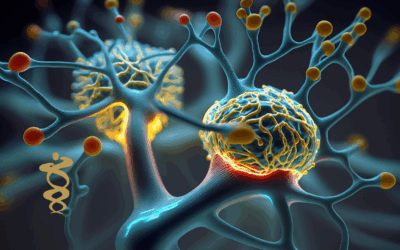Joint pain and stiffness don’t have to be inevitable as we age—not for athletes, arthritis sufferers, or active adults who want to maintain their mobility and quality of life. Traditional methods of joint care have often been reactive, focusing on managing pain after it arises or resorting to invasive surgeries once the damage is severe. But what if there was a way to support and protect your joints before the pain takes over or surgery becomes the only option?
Enter regenerative joint therapy, an integrative and proactive approach to maintaining joint health, reducing long-term damage, and empowering individuals to stay active without relying on invasive interventions.
The Pitfalls of Traditional Joint Care
For decades, the standard path to joint care has been reactive. Here’s how the trajectory often looks:
- A patient notices pain or stiffness and is prescribed painkillers or receives cortisone injections.
- These treatments offer temporary relief but don’t address the underlying issues, like tissue damage or inflammation.
- Over time, the joint degenerates further. Eventually, they’re referred for joint replacement surgery.
While cortisone shots can ease inflammation in the short term, repeated use often accelerates joint tissue degradation, creating a cycle that requires progressively more aggressive interventions. Joint replacement surgery, on the other hand, is invasive, carries significant risks, and includes a lengthy recovery period.
This traditional approach doesn’t optimize joint health or support the body’s innate healing capabilities. Instead, it waits for dysfunction and damage to reach a critical point, leading to costly and intensive treatments.
Why Regenerative Joint Therapy is a Game-Changer
Think of your joints like a car. Regular maintenance ensures that small issues don’t grow into expensive, time-consuming repairs. Similarly, regenerative joint therapy provides the “tune-ups” your joints need to prevent breakdowns and crisis-level degeneration.
With regenerative joint therapy, the focus shifts to proactive care designed to strengthen joints and optimize their function over the long term. Here’s how it works:
- Cellular Therapies: Treatments like platelet-rich plasma (PRP) or stem cell therapy can regenerate joint tissue, repairing minor damage before it becomes severe.
- Peptides and Nutrient Support: Compounds like peptides help reduce inflammation, while nutrients—including the powerful antioxidant glutathione—work to support tissue health at the cellular level by combating oxidative stress.
- Mitochondrial Support: Boosting mitochondrial function ensures your cells, including those in joints, have the energy they need to repair and maintain healthy tissue.
- Early Intervention: Addressing early discomfort helps preserve joint mobility, reduces wear and tear, and keeps joints functioning smoothly for years to come.
This proactive approach taps into the body’s natural healing abilities, empowering patients to avoid invasive procedures wherever possible and keep mobility for the long term.
What Makes Regenerative Therapy Unique?
Unlike reactive methods, regenerative medicine is all about addressing the root cause of joint problems—not just masking the symptoms. It allows the body to rebuild and repair its structures. For instance, peptides help signal the body to heal inflammation, while glutathione targets the oxidative stress that contributes to joint wear and tear.
The goal is simple but powerful: to ensure you can keep your own natural knees, hips, or other joints for as long as possible, so you can continue leading an active life with fewer limitations.
Who Can Benefit from Regenerative Joint Therapy?
Regenerative joint therapy is ideal for anyone looking to maintain or enhance their joint health, including:
- Athletes and Active Adults: Those with high-use, high-stress joints that need extra care to prevent unnecessary wear and tear.
- Individuals Recovering from Injuries: A boost to their body’s healing mechanisms to speed up recovery and restore joint function.
- Arthritis Sufferers: Reducing inflammation and discomfort while encouraging healthier tissues to slow down the progression of their condition.
- Weight Loss Seekers: For individuals who have lost weight and want to protect their joints from added stress and strain going forward.
- Anyone Experiencing Early Joint Discomfort: Small steps now can prevent major steps later.
If you’ve experienced joint pain or stiffness or simply want to protect your mobility for years to come, regenerative therapy may be the proactive solution you need.
A Vision of Better Joint Health
Picture this as your reality:
Instead of a cycle of cortisone shots and eventual surgery, you invest in the health of your joints now. Your knees, hips, and shoulders feel strong and supple. You’re still running that 5K, hiking with friends, or simply playing with your kids or grandkids without hesitation. Regenerative joint therapy makes this possible by complementing the body’s natural abilities and optimizing joint health.
Stay Active, Stay Mobile
At Medical Transformation Center, we believe that you don’t have to surrender your mobility to age, arthritis, or overuse. By choosing a proactive, regenerative approach to joint care, you’re choosing to stay active, pain-free, and independent for as long as possible.
Don’t wait for joint pain to take over. Stay active, stay mobile—book a consultation with us today to explore how regenerative joint therapy can transform your joint health.





